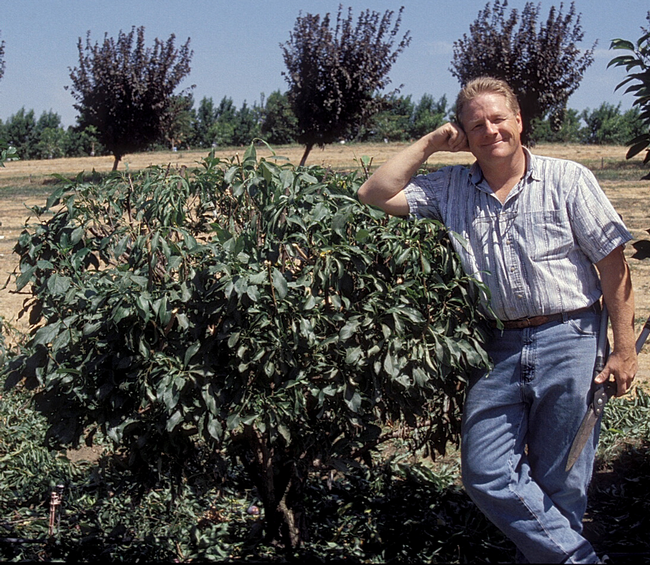
Did you know? Fruit trees can be kept under 6' tall so you can easily access the fruit. Surprisingly, although the trees are small, you will still get plenty of fruit!
UCCE Stanislaus County Master Gardeners hope to see you at a local Stanislaus County library branch to learn more.
- Tuesday, December 6, 2022 at 6:00 p.m. – Salida Library
- Monday, December 12, 2022 at 6:00 p.m. - Ceres Library
- Wednesday, December 14, 2022 at 2:30 p.m. - Patterson Library
- Wednesday, December 28, 2022 at 6:00 p.m. - Turlock Library
Backyard Orchard:Growing deciduous fruit trees is not for the faint-hearted. Trees such as apples, apricots, plums, pears, peaches, cherries, are not all pruned or managed the same way. Winter is the best time to plant a fruit tree, as you can purchase them as “bare root” fruit trees at a lower cost. You will learn how to correctly plant a bare root fruit tree, and how to prune it in the future to keep it small. This class does not include citrus, a separate class taught next spring.
Due to holidays conflicting with class dates, this class won't be offered at Riverbank, Oakdale, and Modesto Library locations.
Contact your local library branch to find out more. Missed a class you wanted to take? Watch it on our YouTube Channel! http://ucanr.edu/youtube/ucmgstanislaus
*Unfortunately, deciduous fruit trees that lose their leaves like apple, plum, pear, apricot, and cherry, have root systems that grow too large for containers. Luckily, you can plant many citrus tree varieties in containers.
- Author: Anne Schellman
HAPPY GIVING TUESDAY!

Please help the UCCE Stanislaus County Master Gardener Program reach our goal of raising $5,000 to help fund a pathway and sign for the garden. Today, November 29, 2022 on Giving Tuesday* is a great time to make a contribution, which will be directly reflected in our garden, which you can visit at anytime!
Right now, the garden doesn't look like much. It was just planted this past week, and the drip irrigation was installed. Native plants such as Cleveland sage, coyote bush, penstemon, and ceanothus are just "babies." By this time next year, they will have grown in size and be flowering! We hope to see visiting hummingbirds, bees, moths, butterflies, bumblebees, and YOU!
How to Give
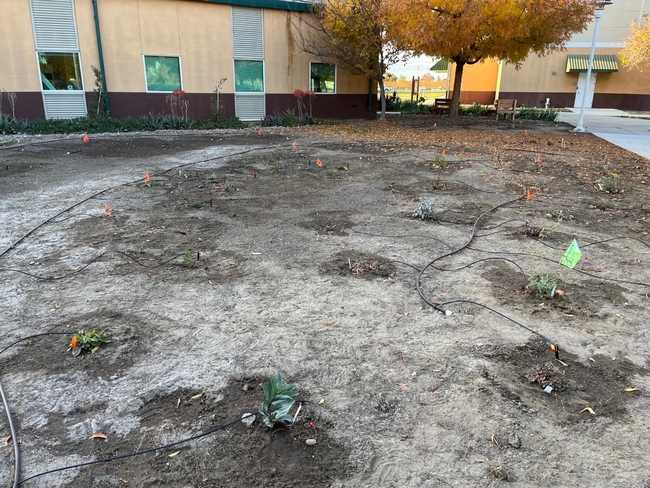
If you prefer to donate by check, please make it out to: UC Regents and send to:
UCCE Stanislaus County Master Gardener Program
3800 Cornucopia Way, Ste A
Modesto, CA 95358
Thank you!
*sorry for any confusion, the last post said Nov 28 was giving Tuesday which is incorrect and has been changed.
Anne Schellman has been the UCCE Master Gardener Coordinator for Stanislaus County since 2018.
- Author: Anne Schellman
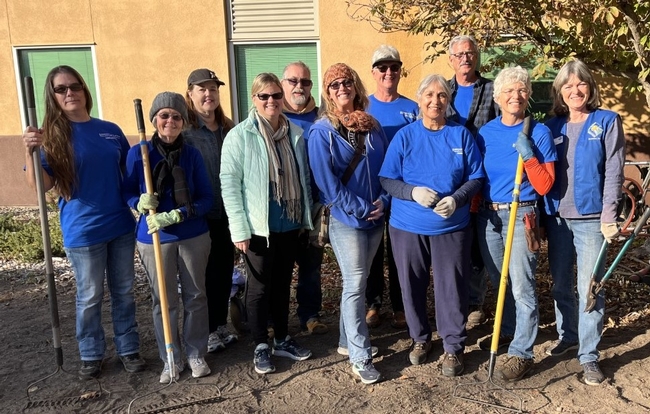
Currently, we are installing demonstration gardens to be used as outdoor classrooms that the public can visit anytime, and we need your help!
Pollinator Garden
Our Pollinator Garden is in the installation stage, and we could not be more thrilled. Currently, the irrigation and native plants are going in. Our Master Gardener volunteers were hard at work leveling, raking, and planting just this week.
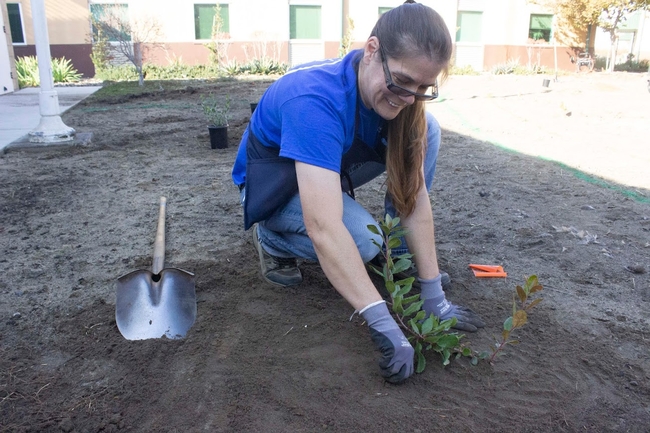
A big “thank you” to the West Resource Conservation District that helped us prepare the garden site, and to our local North San Joaquin Valley Chapter of the California Native Plant Society https://nsj.cnps.org/ for purchasing and donating the native plants! Many of these species are unusual and not normally found in the landscape. Although newly planted, everyone is welcome to stop by and visit*.
Your Funds Help Make this Garden Happen
Help make this demonstration garden come to life! Funds will be used to purchase additional plants, tools, and educational signage. Our big funding goal is a decomposed granite walkway. This is a pricey item, which can cost several thousand dollars. The benefits are a pathway accessible to everyone that avoids runoff and allows good drainage.
How to Give
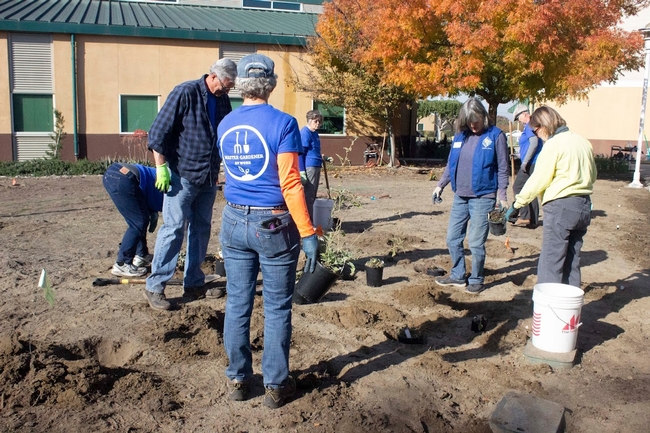
If you prefer to donate by check, please make it out to: UC Regents and send to:
UCC Stanislaus County Master Gardener Program
3800 Cornucopia Way, Ste A
Modesto, CA 95358
Thank you
We look forward to meeting you in the near future in our “outdoor classroom” aka Pollinator Garden for classes on pollinators, California native plants, and how you can support them in your backyard garden, patio, apartment, or classroom.
* Our gardens are located at the Ag Center complex on the corner of Crows Landing and Service Roads in Modesto at 3800 Cornucopia Way, 95358. The Pollinator Garden is on the east side of the Stanislaus building, while the Sensory Garden is on the west side.
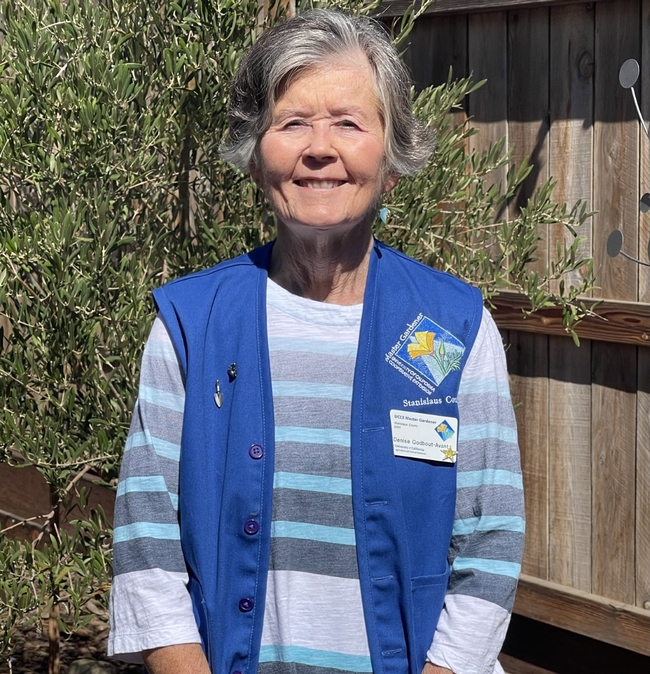
Mulching Perennials
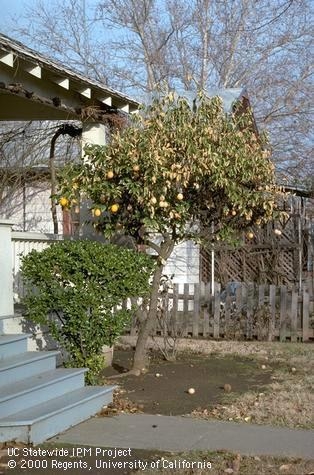
Trees and Shrubs
Trees and shrubs usually have an easier time getting through the winter if they are in good shape. However, if a freeze is forecasted, one of the most important things to do is to ensure they have been watered 2-3 days prior, especially if autumn has been dry. As with perennials, mulching with fallen leaves or other mulch will help protect the roots, but do not have mulch up against the tree trunk or plant stem, which could cause rot to occur.
Wrapping trunks of young trees with blankets, towels or piping insulation will provide added protection.
Bulbs

Wait until after the first frost, then gently dig up the bulbs or tubers. Cut away any leaves and brush off as much soil as possible. Let them dry out in a cool spot for about a week. Label them so you'll remember what they are! Pack them in a breathable box, such as a cardboard box, storing the bulbs so they don't touch each other, and cover them in sawdust or shredded newspapers. Keep them in a cool, dark location that is below 45°F, but doesn't freeze.
Citrus
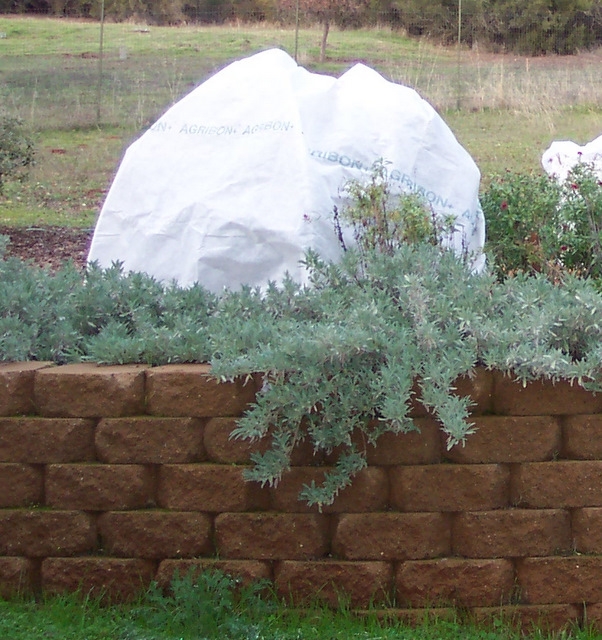
Citrus plants can be protected by frost cloths which allow some light and air to penetrate and can stay on plants for a few days at a time. They can also lay directly on plant foliage. If you use other type of cloth such as burlap or cotton sheets, use stakes to hold the cloth away from the plant greenery. Remove it during daytime when temperatures are above freezing and sunny, and replace it each night prior to sunset. Whatever cloth you use, make sure the cloth goes all the way to the ground to capture radiant heat from the ground. If there is mulch around the plant, rake away during the day, if above freezing and sunny, to allow the soil to warm up.
Roses
Some roses are more sensitive to cold than others. As a group, hybrid tea roses are the most vulnerable. Make sure they are watered prior to predicted freezing temperatures, protect the root zone with mulch on the soil mound. You may also wish to cover your sensitive roses with frost cloths.
Container Plants
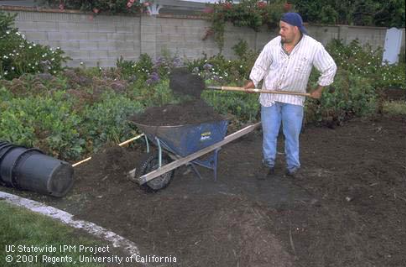
What do do if frost damages your plants? Wait!
Frost damage occurs when the water inside the cells of a plant freeze, causing damage to the cellular walls, which harms the overall health of the plant. Frost damaged vegetation will wilt, turning brown or black, as if they have been scorched. The bark may crack, or split. In severe or prolonged periods of frost the plant can die.
If you see what appears to be frost damage, wait until late spring until all chance of frost has passed. Plants are resilient and can often recover on its own, producing new growth. Pruning what seems to be damaged branches too soon can cause significantly more trauma, even death, to a vulnerable plant that might otherwise have recovered in the spring.
Resources
- https://ucanr.edu/blogs/blogcore/postdetail.cfm?postnum=22929
- https://sacmg.ucanr.edu/Frost_Protection/
- https://ucanr.edu/blogs/blogcore/postdetail.cfm?postnum=45517
- http://ipm.ucanr.edu/PMG/GARDEN/ENVIRON/frostdamage.html
Denise Godbout-Avant has been a UC Cooperative Extension Master Gardener in Stanislaus County since 2020.
- Author: Anne Schellman
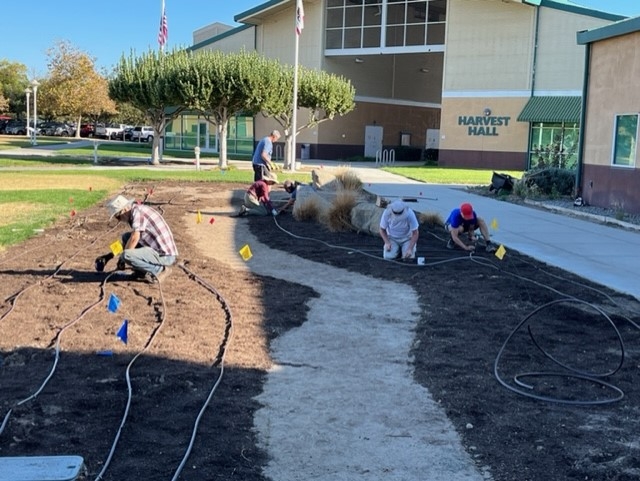 Giving Tuesday is November 29, 2022! Please join us in this opportunity to give to your local UCCE Stanislaus County Master Gardener Program. Your dollars are used locally to make our county a better place.
Giving Tuesday is November 29, 2022! Please join us in this opportunity to give to your local UCCE Stanislaus County Master Gardener Program. Your dollars are used locally to make our county a better place.
Thanks to generous donations from individuals like you, as well as in-kind donations and funding from sponsors, our Sensory Garden has been installed! In fact, the last landscaping step, adding mulch, will be done by volunteers on Giving Tuesday!
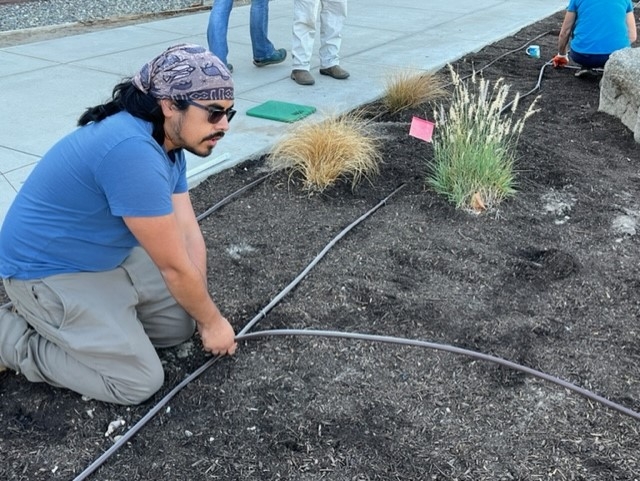
These photos show our Master Gardeners installing drip irrigation donated by Hunter Industries, and plants donated by Frantz Nursery.
Where can I see the Sensory Garden?
This garden is located on the east side of the Stanislaus Building, at the main entryway. The garden will be used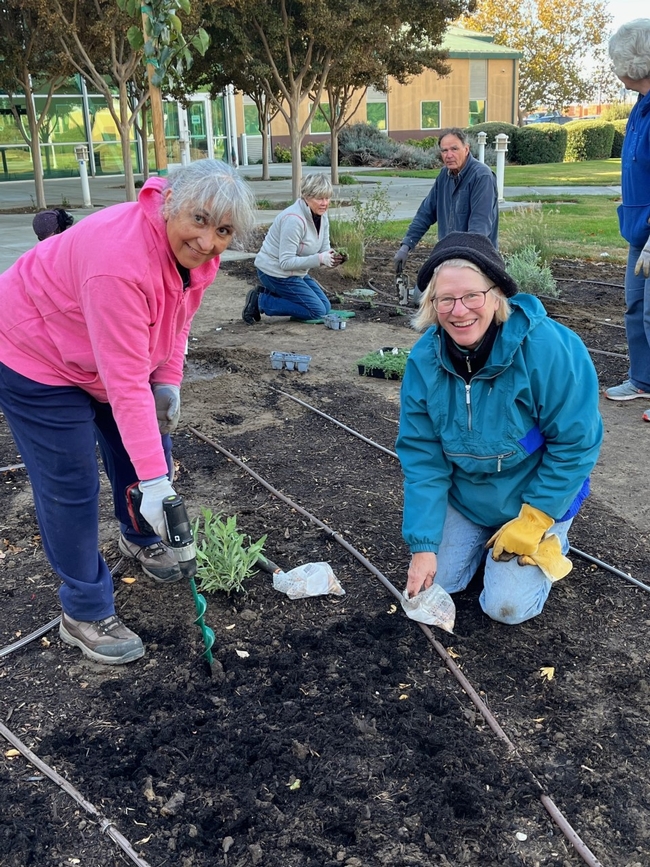
The Pollinator Garden
Thanks to a generous donation from the West Stanislaus Resource Conservation District, we are starting our Pollinator Garden. The Great Valley Seed Company donated milkweed seeds which will be planted in the garden, too. Next week, volunteers will be installing irrigation and planting.
How You Can Help
Any amount you can donate helps us grow our gardens and our program! The purpose of the gardens is to showcase low-water use plants the public can see anytime. In addition, the areas will be used as outdoor classrooms to teach topics such as drip irrigation, pollinator gardening, plant identification, low water use gardening, and more!
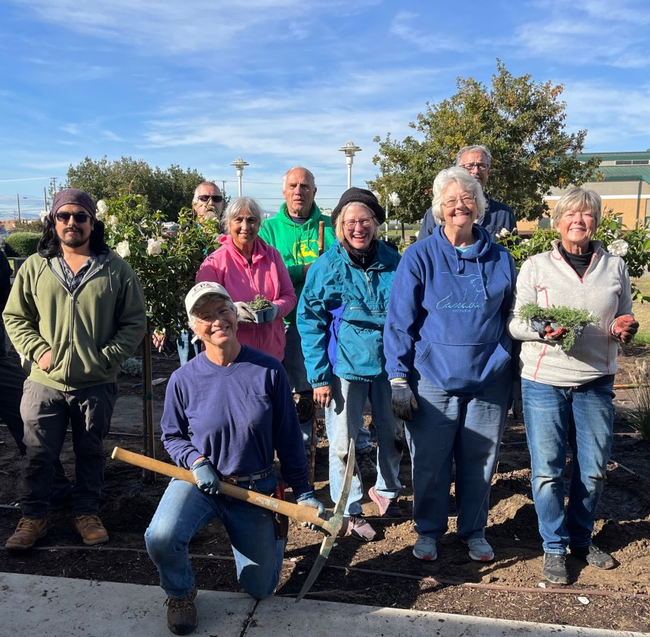
Our Goal
We are looking to raise $5,000 to help with irrigation installation, tools, seeds, and other needed materials. We are a 501 c (3), so your donation is tax-deductible. https://ucanr.edu/sites/givingtuesday/ This site allows you to give by credit card. (A fee is taken for the use of a credit card.) If you would prefer to give by check, make your check out to “UC Regents” and mail it to:
UCCE Master Gardener Program
3800 Cornucopia Way, Ste A
Modesto, CA 95358
Thanks for your support!

